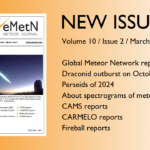By Paul Roggemans, Denis Vida, James M. Scott, Peter Jenniskens, Damir Šegon, and David Rollinson
Abstract: A meteor shower outburst caused by a predicted encounter with the 1974 trail of the Jupiter-family comet 46P/Wirtanen was optically observed above the southwest Pacific, close to the forecast time on the evening of December 12, 2023. 24 multi-station meteor orbits were computed using data from GMN and CAMS stations in New Zealand and Australia, with a radiant at R.A. 7.1° and Decl. –38.8°, located in the Sculptorid constellation. These observations confirm the predictions of its occurrence published earlier by Vauballion et al. (2023). The observed ZHR is low (~0.5 meteors/h) and is due to the slow in-atmosphere velocity of the shower meteoroids (~15 km/s). The average size of the observed meteoroids is ~4 mm, while most of the activity has been predicted in <mm sizes. The large video meteor camera arrays (> 100 cameras) hosted by amateur astronomers in New Zealand and Australia played a critical role in confirming this new meteor shower, as it would have otherwise been missed.
Introduction
In 1972, comet 46P/Wirtanen (Figure 1) made a pass within 0.276 astronomical units of Jupiter, and another approach in 1984 came within 0.467 AU (Figure 2), Figure 3 shows the current orbit of the comet. Known to be just over 1.5 km wide (Lejoly et al., 2022), 46P/Wirtanen is a Jupiter-family comet that orbits the Sun every 5.4 years. It was originally the target for the Rosetta mission before the mission was delayed and resulted in a change of target to 67P/Churyumov–Gerasimenko. The comet was long known as a potential parent body of a meteor shower due to its closeness to Earth’s orbit (e.g., review by Ye and Jenniskens, 2022).
No meteor shower associated with this comet has been observed in the past, but Maslov (2024) published a forecast for possible activity from this comet in 2023 and 2024. He alerted observers about a possible first encounter at 20h55m UT on December 10, 2023 (λʘ = 258.20°) with particles from the 1967 trail and a second encounter at 17h54m UT on December 12, 2023 (λʘ = 260.11°) from the 1974 trail. Although the chances of meteoroids entering the atmosphere were not favorable for both encounters, the author asked observers to check for possible activity. He predicted a more favorable encounter for 2024 at 2h21m UT on December 13.
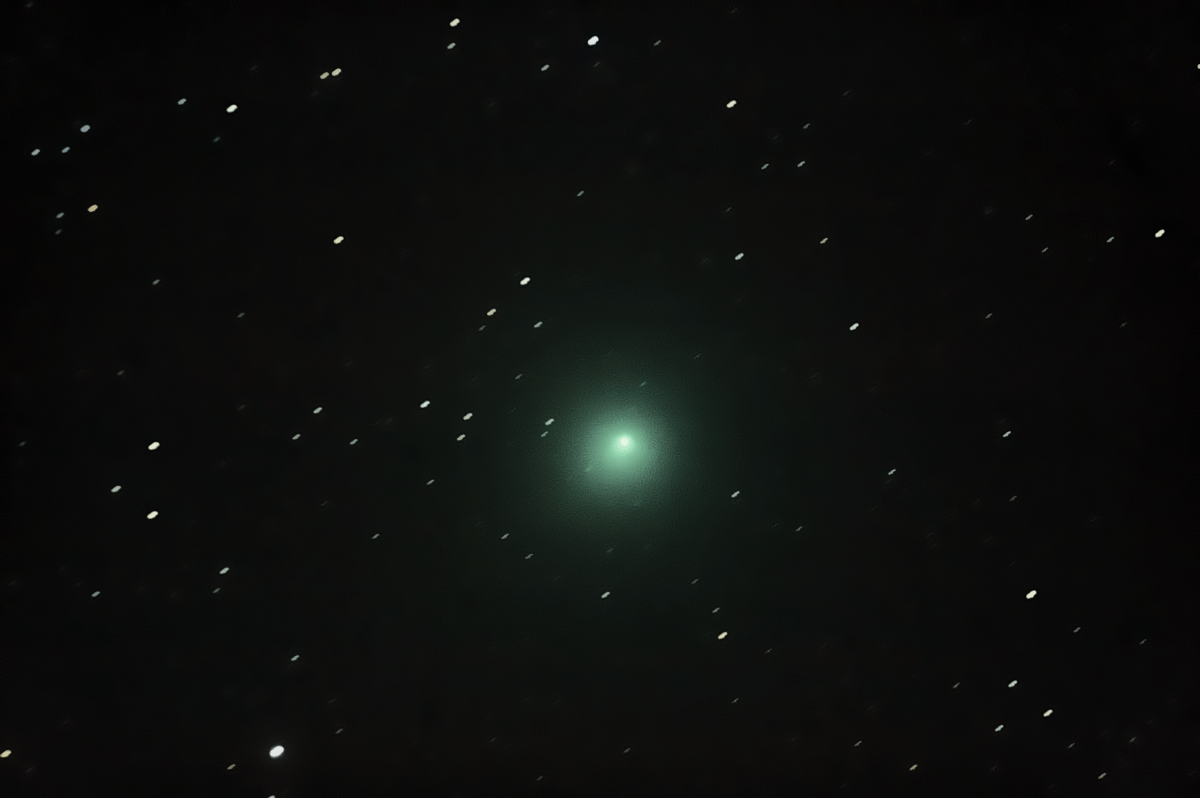
Figure 1 – 46P Wirtanen, photographed in 2018 by Rolf Carstens (Geyserland Observatory).
In another work, Vaubaillon et al. (2023) also calculated that an encounter with a new meteoroid stream above the Southwestern Pacific could be detected in 2023. Their simulations have shown that it is probable that no meteor activity occurred in the recent past, and 2023 would be the first year with any activity with a maximum on December 12, 2023, between 8h00m and 12h30m UT (λʘ 259.689°–259.879°) with a radiant area near the star λ-Sculptoris (7.5° < αg < 9.2°, –38° < δg < –43°). The low geocentric velocity (vg ~10 km/s) and the relatively small sizes of the meteoroids make this a rather difficult shower for any visual observations (Vaubaillon et al., 2023). The predicted radiant position is in perfect agreement with the forecast by Maslov but the time of the maximum activity for the 1974 dust trail by Vaubaillon et al. (2023), is more than 6 hours earlier than forecast by Maslov.
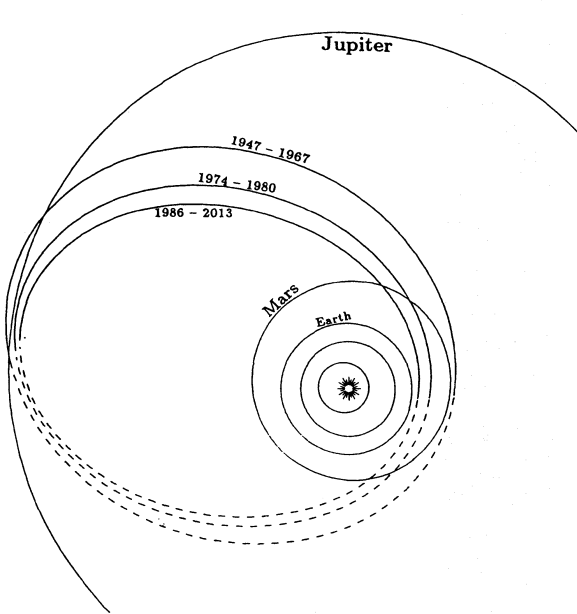
Figure 2 – 46P/Wirtanen, changes in its orbit in 1972 and 1984. (Reproduced from: Królikowska and Sitarski, 1996).
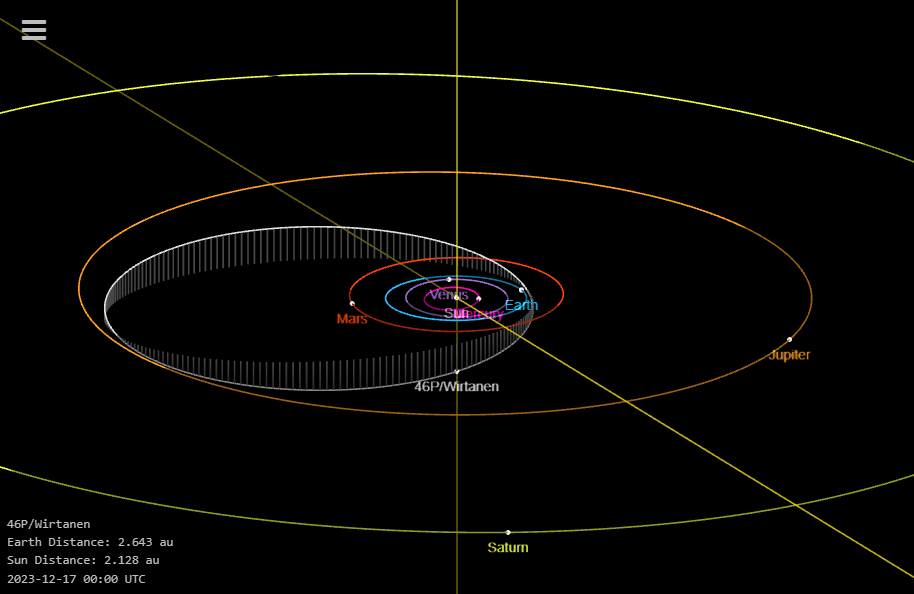
Figure 3 – The current orbit of the parent comet 46P/Wirtanen relative to the planets.
Radio observations
The first indication of unusual activity appeared on the webpages of IPRMO maintained by Hiroshi Ogawa and Hirofumi Sugimoto which suggested likely enhanced activity recorded by radio observers. However, some caution is warranted since radio forward-scattering observations cannot identify the direction of observed meteor echoes but only provide raw counts. The final compilation of radio observations shows a broader and shallower peak lasting until solar longitude 260.3° (Figure 4). The graph is calculated using the factors for the Geminids and not for 46P/Wirtanen. Further investigation is required to determine the cause of this rate enhancement which will be treated in a separate report.

Figure 4 – First indication for a possible meteor activity caused by particles from 46P/Wirtanen, extracted from the website on December 19, status 23h UT (credit Hirofumi Sugimoto).
Video observations
CAMS Chile (Jenniskens et al., 2011) detected a single meteor associated with this new shower in the hours leading up to this peak (see Table 1), but CAMS New Zealand on the South Island was clouded out.
The Global Meteor Network (GMN; Vida et al., 2019, 2020, 2021) cameras on the North Island of New Zealand (coordinated by J. Scott at the University of Otago) successfully recorded 10 meteors within the predicted range of radiants (Figures 5 and 9). A CBET telegram was issued following this confirmation (Jenniskens et al., 2023).
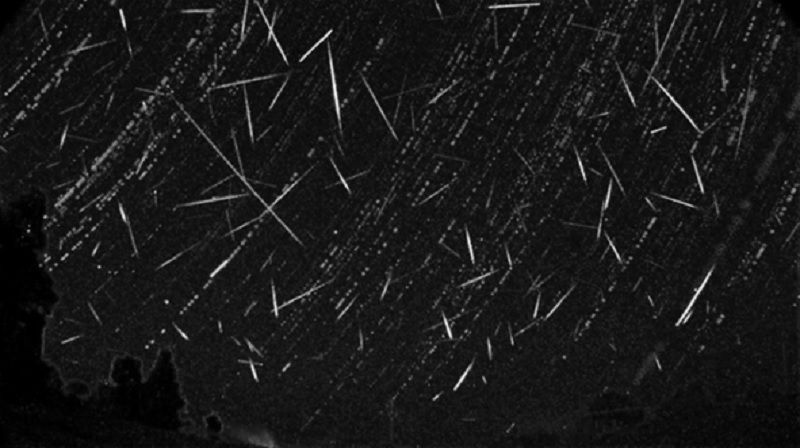
Figure 5 – December 12th night sky image collected NZ0017 in Rotorua, New Zealand. This stacked night image comprises mostly Geminid meteors and a couple of lambda-Sculptorid meteors (Credit: Peter McKellar).
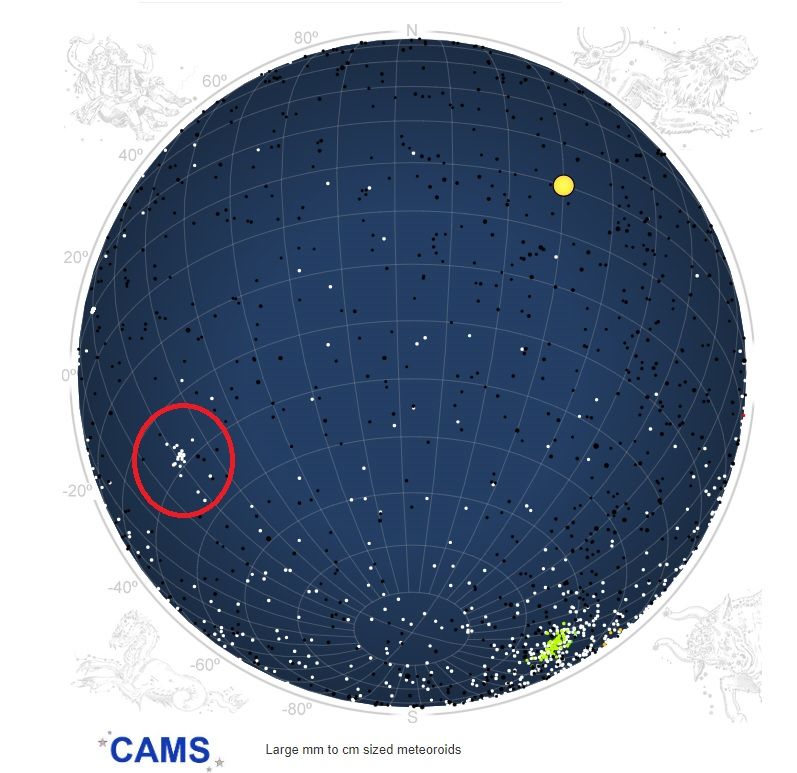
Figure 6– Plot for 2023 December 13 taken from the CAMS website . The region with the radiant produced by particles that were released by comet 46P/Wirtanen is marked with red.
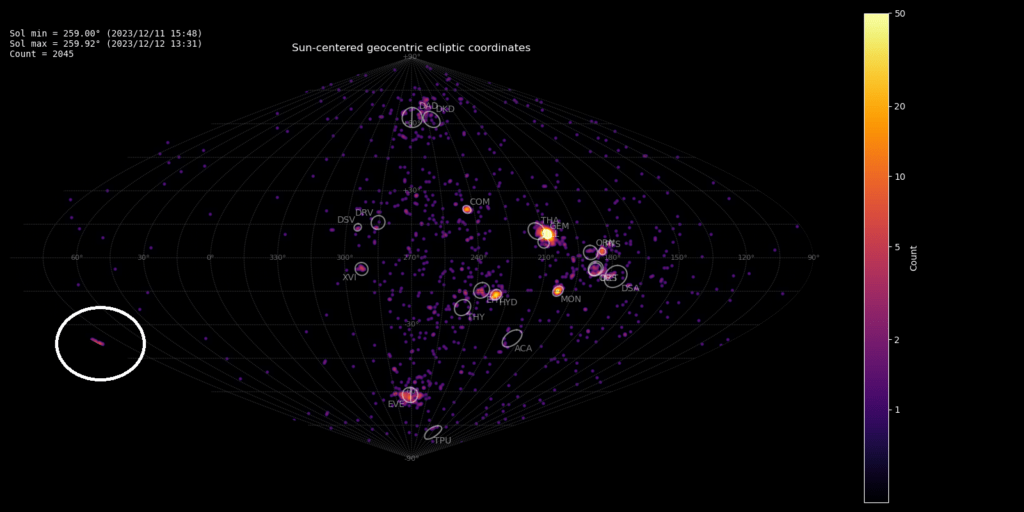
Figure 7 – Heat map for 2045 Sun-centered ecliptic radiants obtained by GMN during the time interval 259.00° < λʘ < 259.92°.
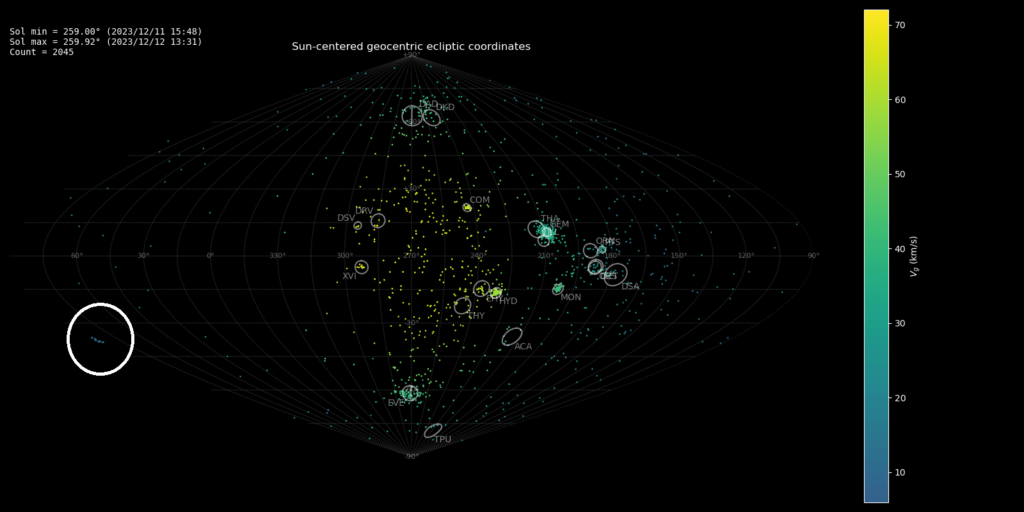
Figure 8 – Velocity distribution for 2045 Sun-centered ecliptic radiants obtained by GMN during the time interval 259.00° < λʘ < 259.92°.
Further 12 meteors were detected by the cameras of Global Meteor Network in Australia (coordinated by D. Rollinson) (Figures 10 and 11), and 4 were also detected by the CAMS cameras of the CAMS Australia network (coordinated by H. Devillepoix at Curtin University).
The main activity at optical sizes occurred between 259.76° and 260.08° in solar longitude (or December, 12, 9h40m and 17h10m UTC) with 24 meteor orbits captured within this interval. One of these 24 was recorded from Bulgaria and another from South Korea, both with a D-criterion DD < 0.01 (Drummond, 1981). Apart from the CAMS orbit recorded in Chile, 3 more orbits with very similar elements were recorded before the main group of 24 orbits, two from the UK and one from Bulgaria. One more orbit was detected in New Zealand about 20 hours after the main group.
Figures 6, 7 and 8 show that the usual number of meteor radiants near the antapex is very low. The antapex is the direction opposite to the direction of Earth’s motion around the Sun, which is at the edge of the plot in Figures 7 and 8. The reason is that these meteoroids come from the rear into the Earth atmosphere which moves away at about 30 km/s. Meteoroids entering the atmosphere from this direction must catch up to the Earth and have enough velocity relative to our planet to produce enough energy to cause ionization and become visible as a meteor. Experienced meteor observers know that the local evening hours display low meteor activity compared to the morning sky when our planet catches meteoroids ‘head-on’. For example, typical evening meteor showers such as the Andromedids and October Draconids produce very slow meteors from a very dispersed apparent radiant, comparable to meteors from 46P/Wirtanen. Hypothetically, if the Earth encountered the same meteoroids head-on at much higher velocities (the radiant would be near the apex), a particle of the same size would produce much brighter meteors thanks to the energy being proportional to the square of the impact velocity.
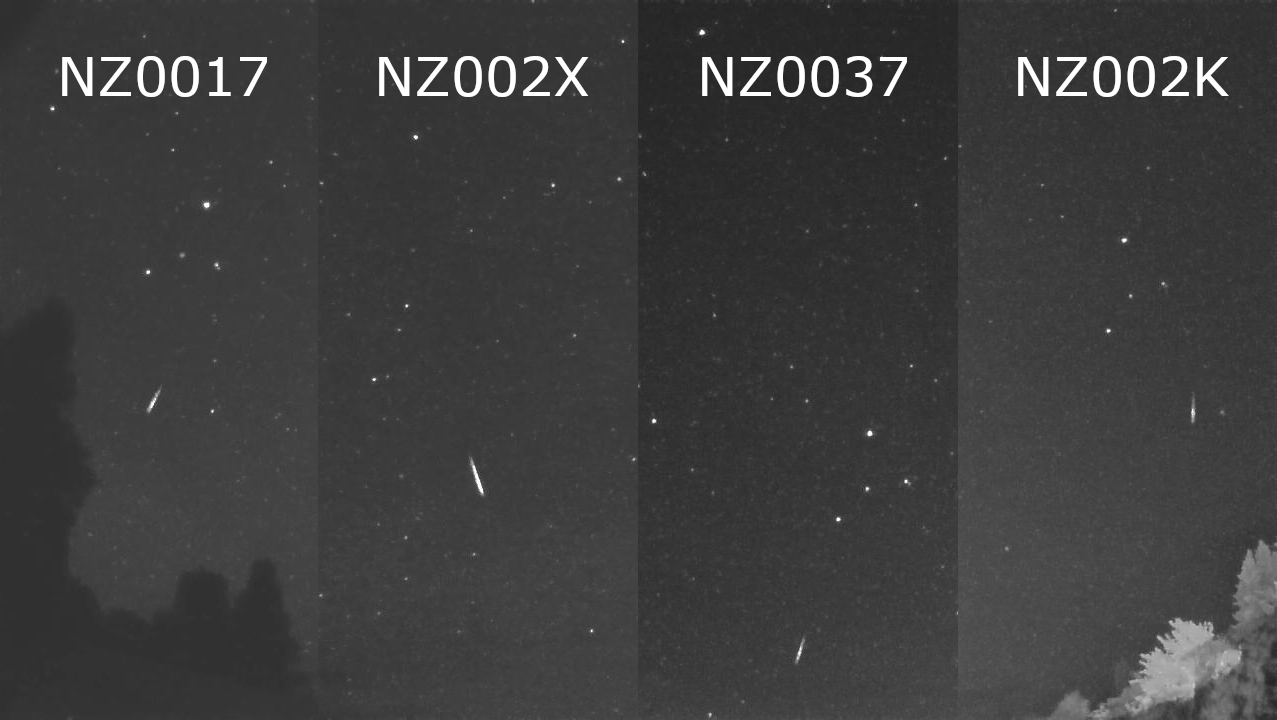
Figure 9 – A lambda-Sculptorid as recorded on 12 December, 2023, at 11h05m58s UT from 4 locations by GMN cameras in New Zealand. NZ0017 is Kaharoa, Rotorua, NZ002X is Maharakeke Road 1, Waipukurau, NZ0037 Welcome Bay 2, Tauranga, NZ002K Western Heights High School, Rotorua.
Figure 10 – A lambda-Sculptorid meteor recorded by AU001D at Darkan, Western Australia at 13h21m43.1s UT on 12 December 2023.
Figure 11 – A lambda-Sculptorid meteor recorded by AU002C at Pemberton, Western Australia at 13h21m43.1s UT on 12 December 2023.
Mean radiant and orbit
An analysis with an iterative procedure to locate the best-fitting mean orbit for a concentration of similar orbits has been applied to a sample of GMN orbits selected as follows:
- 258° < λʘ < 261°
- 350° < αg < 20°
- –46° < δg< –36°
- vg< 12 km/s
9717 orbits, recorded by GMN in 2023, were available for the above-mentioned time interval in solar longitude. The method used for this search has been described before (Roggemans et al., 2019) and combines three classic discrimination criteria, considering different classes for the degree of similarity. The discrimination criteria used in this method are that of Southworth and Hawkins (1963), identified as DSH, Drummond (1981), identified as DD, and Jopek (1993), identified as DH. The method to compute the mean orbit at each step during the iteration process has been described by Jopek et al. (2006). We define five different classes with specific threshold levels of similarity:
- Low: DSH < 0.25 & DD < 0.105 & DH < 0.25;
- Medium low: DSH < 0.2 & DD < 0.08 & DH < 0.2;
- Medium high: DSH < 0.15 & DD < 0.06 & DH < 0.15;
- High: DSH < 0.1 & DD < 0.04 & DH < 0.1.
- Very high: DSH < 0.05 & DD < 0.02 & DH < 0.05.
The procedure converged at a mean orbit derived from 28 similar orbits with the median radiant almost exactly at the predicted position (Table 1). For this type of orbit, we consider only orbits with a high threshold of similarity (DD < 0.04) in order to exclude random sporadic orbits. The first meteor was recorded by 9 cameras in the UK at λʘ = 258.18°, followed at λʘ = 259.054° by a second meteor by two GMN cameras in Bulgaria. The next of these orbits was recorded at λʘ = 259.122° by four cameras in the UK. Then there is a pause until 24 more orbits were detected during the interval 259.76°< λʘ < 260.08°, 10 by cameras in New Zealand, 12 by cameras in Australia, one from Bulgaria and one from South Korea, all except four with DSH < 0.03 and DD < 0.02. It seems no activity was detected between the first three cases, and the cluster of 24 very similar orbits, although cameras were successfully capturing in between from different geographic locations.
Table 1 – The orbital elements of the parent comet, and mean orbital parameters of the meteors based on CAMS (Jenniskens, 2023) and GMN data.
| 46P/Wirtanen | CAMS | GMN | |
| Epoch | JD 2458465 | J2000.0 | J2000.0 |
| λʘ (°) | – | 259.402 | 259.93 |
| αg (°) | – | 4.6±0.5 | 7.1±1.7 |
| δg (°) | – | –36.4±0.9 | –38.8±0.8 |
| vg (km/s) | – | 8.6±0.1 | 10.0±0.2 |
| λ – λʘ (°) | – | – | 88.3±1.4 |
| β (°) | – | – | –37.8±1.0 |
| Hb (km) | – | – | 90.2±1.1 |
| He (km) | – | – | 78.9±3.2 |
| a (AU) | 3.09 | 4.1 | 2.90±0.16 |
| q (AU) | 1.05536 | 0.968 | 0.9846 |
| e | 0.6588 | 0.766 | 0.661±0.002 |
| ω (°) | 356.340 | 343.7 | 359.84±0.75 |
| Ω (°) | 82.158 | 79.4 | 79.92 |
| i (°) | 11.75 | 7.6 | 9.17±0.32 |
| Π (°) | 78.5 | 63.1 | 79.76±0.74 |
| Tj | 2.82 | 2.40 | 2.90±0.09 |
| N | – | 1 | 24 |
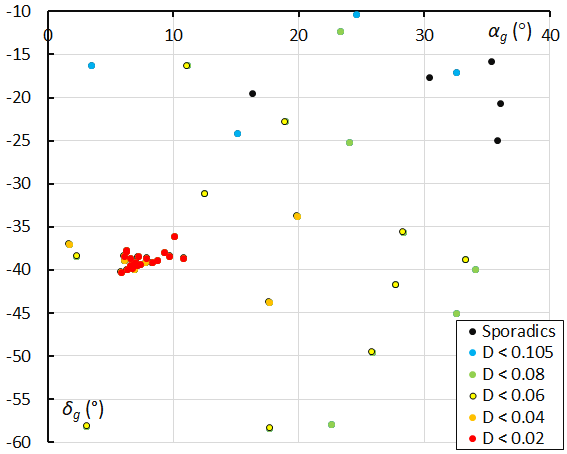
Figure 12 – The 46P/Wirtanen meteor radiant in geocentric equatorial coordinates (GMN orbit data).
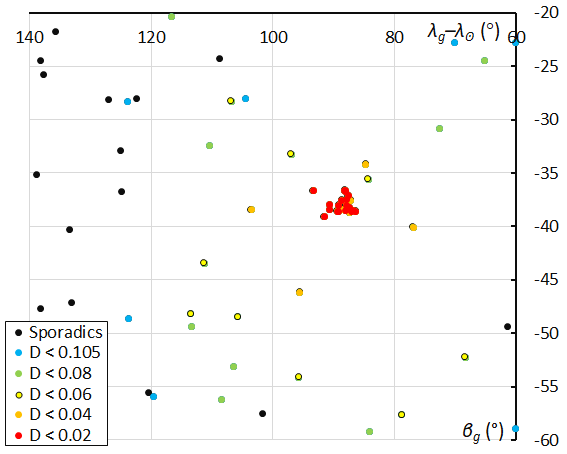
Figure 13 – The 46P/Wirtanen meteor radiant in geocentric Sun-centered ecliptic coordinates (GMN orbit data).
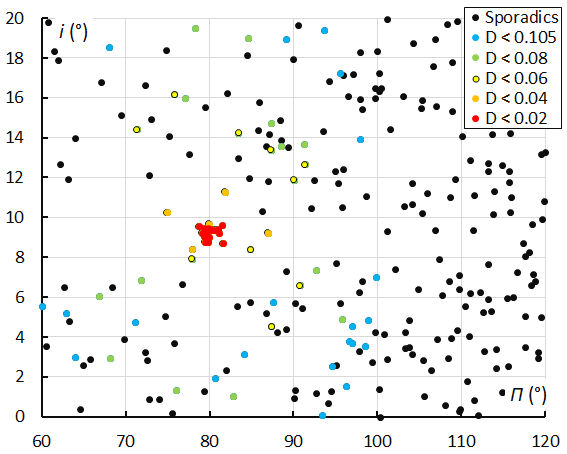
Figure 14 – The distribution of the inclination i against the longitude of perihelion Π for the 46P/Wirtanen meteoroid orbits (GMN orbit data).
The Solar System is filled with very old meteoroids on orbits at low inclination which have evolved over time far away from the orbits of their parent bodies, and which cannot be associated with any meteoroid stream. These meteoroids are classified as sporadic. Sometimes it may be difficult to differentiate between a sporadic on a very similar orbit to a shower meteor and a dispersed meteoroid stream member. Therefore, we decided to use only the 24 orbits in a tight cluster within time of the predicted activity. The values given for GMN data in Table 1 are based on this cluster.
The radiant plot in equatorial coordinates (Figure 12) shows a very compact radiant area with only 3 events separated from the main radiant concentration. The same situation appears in the plot with the Sun-centered ecliptic coordinates (Figure 13). Looking at the distribution of the inclination i against the longitude of perihelion Π, we see the same concentration (Figure 14). We can conclude that there is sufficient evidence that Earth encountered a concentration of particles which confirm the presence of dust produced by the 1974 dust trail of comet 46P/Wirtanen.
The black dots in Figures 12, 13 and 14 are sporadic orbits. For the computation of the mean orbit only the red and orange dots were considered (DD < 0.04). The compact concentration of these orbits is obvious from these distributions. For reason of completeness, we also plot the “less” similar orbits color-coded as yellow, green and blue. In our limited analysis, we cannot assess if these are dispersed particles associated with 46P/Wirtanen or are simply nearby sporadics.
We also checked for possible activity from the first encounter forecasted by Mikail Maslov, at 20h55m UT on December 10 (λʘ = 258.20°) with particles from the 1967 trail. We found only 3 orbits at this node with DD < 0.04, dispersed over about a day and which cannot be excluded as sporadics.
A search among meteor orbit data of previous years resulted in a number of similar orbits with DD < 0.04 using the mean orbit from Table 1 as a reference orbit. The search was applied on 471583 orbits by CAMS (2010–2016), 508266 orbits by EDMOND (2001–2023), 722314 orbits by GMN (2018–2022) and 443196 orbits by SonotaCo network (2007–2022), 2145359 orbits in total. All positive matches were dispersed in time and in radiants, with no obvious clustering. We conclude that they can be explained as sporadics and that there is no indication of any activity from this source in the past, in line with the findings by Vauballion et al. (2023).
Activity profile
The meteor shower flux profile based on ~150 single-station meteors reported by the GMN (Figure 15) shows that the peak ZHR of the shower was around 0.5 meteors/h, which is well below the detectability threshold for visual observers. In other words, without a large-scale network of video cameras, this activity would have passed completely unnoticed. On average, each camera observed around one lambda-Sculptorid meteor during the entire night.
The mean limiting mass of the flux observations was around 0.02 grams, translating to meteoroids of 4 mm in diameter assuming a cometary meteoroid bulk density of 500 kg/m3.
According to the stream modelling, the shower should have been mainly produced by small particles with a size of less than 1 mm, just under the detectability limit of wide-field GMN cameras but detectable by radio. There is some enhancement in radio meteor activity during the lambda-Sculptorids video activity, but it is unclear if this is due to this meteor shower or some other source. The outstanding question is whether any enhanced activity in radio echoes can be confirmed.
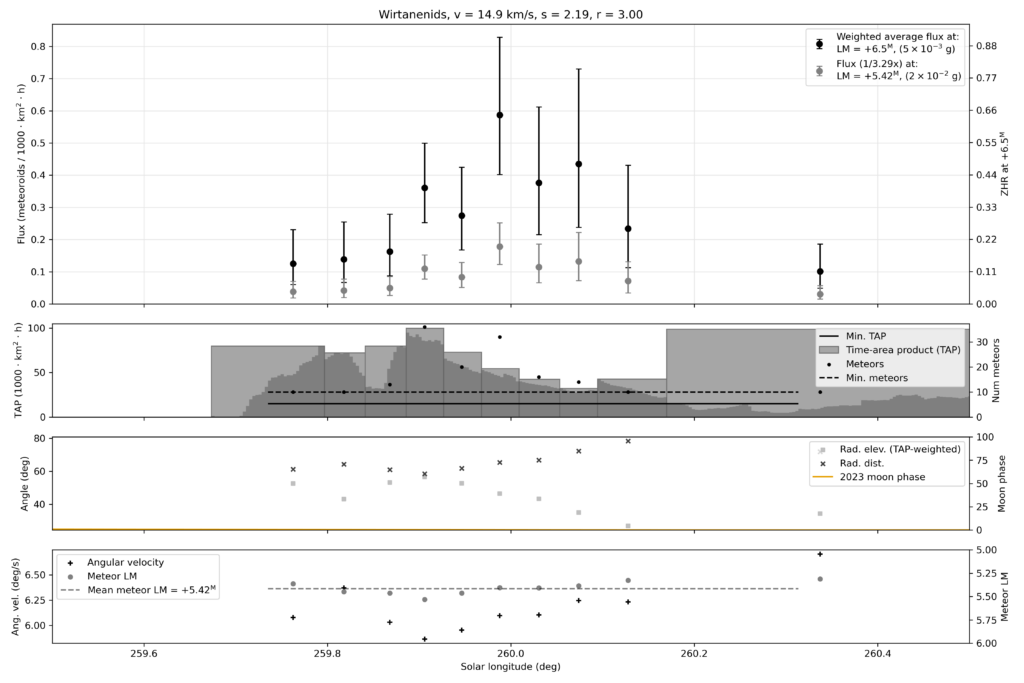
Figure 15 – The flux and corresponding ZHR profile (Vida et al., 2022) for the lambda-Sculptorids based on GMN data collected during 2023.
Conclusion
Radio observers contributing to IPRMO were the first to indicate possible meteor activity related to the 1974 dust trail released by 46P/Wirtanen, but it remains to be confirmed which source caused this enhancement. The visual (video) counterpart confirmed the meteor activity from the predicted radiant position, but with a low activity level (ZHR around 0.5 meteors/h).
The radiant position predicted by Maslov (2024) and Vaubaillon et al. (2023) matches the observed position. The time of the observed activity occurred a few hours later than predicted by Vaubaillon et al. (2023) and a few hours earlier than predicted by Maslov (2024), indicating possible improvements in the shower model parameters.
The new meteor shower has been added to the IAU MDC meteor shower list with preliminary designation M2023-Y1. Once established, it will be given the currently provisional name of lambda-Sculptorids (LSC).
According to Maslov (2024), another possible opportunity to see this shower may occur next year 2024 on December 13, 2h21m UT from a radiant at RA = 340.9°, Dec = +28.3°.
Acknowledgment
The authors thank all the camera operators and people involved in the Global Meteor Network and CAMS. The Global Meteor Network (GMN) data are released under the following license.
The Global Meteor Network results were obtained thanks to the efforts of the following volunteers: Adam Mullins, Aden Walker, Adrian Bigland, Adriana Roggemans, Alain Marin, Alaistar Brickhill, Alan Beech, Alan Maunder, Alan Pevec, Alan Pickwick, Alan Decamps, Alan Cowie, Alastair Emerson, Aled Powell, Alejandro Barriuso, Aleksandar Merlak, Alex Bell, Alex Haislip, Alex Hodge, Alex Jeffery, Alex Kichev, Alex McConahay, Alex Pratt, Alex Roig, Alex Aitov, Alexander Wiedekind-Klein, Alexandre Alves, Alfredo Dal’ Ava Júnior, Alison Scott, Amy Barron, Anatoly Ijon, Andre Rousseau, Andre Bruton, Andrea Storani, Andrei Marukhno, Andres Fernandez, Andrew Campbell-Laing, Andrew Challis, Andrew Cooper, Andrew Fiamingo, Andrew Heath, Andrew Moyle, Andrew Washington, Andrew Fulher, Andrew Robertson, Andy Stott, Andy Sapir, Ange Fox, Angel Sierra, Angélica López Olmos, Anna Johnston, Ansgar Schmidt, Anthony Hopkinson, Anthony Pitt, Anthony Kesterton, Anton Macan, Anton Yanishevskiy, Antony Crowther, Anzhari Purnomo, Arie Blumenzweig, Arie Verveer, Arnaud Leroy, Attila Nemes, Barry Findley, Bart Dessoy, Bela Szomi Kralj, Bernard Côté, Bernard Hagen, Bev M. Ewen-Smith, Bill Cooke, Bill Wallace, Bill Witte, Bill Carr, Bill Thomas, Bob Evans, Bob Greschke, Bob Hufnagel, Bob Marshall, Bob Massey, Bob Zarnke, Bob Guzik, Brenda Goodwill, Brendan Cooney, Brendon Reid, Brian Chapman, Brian Murphy, Brian Rowe, Brian Hochgurtel, Wyatt Hochgurtel, Brian Mitchell, Bruno Bonicontro, Callum Potter, Carl Elkins, Carl Mustoe, Carl Panter, Charles Thody, Charlie McCormack, Chris Baddiley, Chris Blake, Chris Dakin, Chris George, Chris James, Chris Ramsay, Chris Reichelt, Chris Chad, Chris O’Neill, Chris White, Chris Jones, Chris Sale, Christian Wanlin, Christine Ord, Christof Zink, Christophe Demeautis, Christopher Coomber, Christopher Curtis, Christopher Tofts, Christopher Brooks, Chuck Goldsmith, Chuck Pullen, Ciaran Tangney, Claude Boivin, Claude Surprenant, Clive Sanders, Colin Graham, Colin Marshall, Colin Nichols, Con Stoitsis, Craig Young, Creina Beaman, Daknam Al-Ahmadi, Damien Lemay, Damien McNamara, Damir Matković, Damir Šegon, Damjan Nemarnik, Dan Klinglesmith, Dan Pye, Daniel Duarte, Daniel J. Grinkevich, Daniela Cardozo Mourão, Danijel Reponj, Danko Kočiš, Dario Zubović, Dave Jones, Dave Mowbray, Dave Newbury, Dave Smith, David Akerman, David Attreed, David Bailey, David Brash, David Castledine, David Hatton, David Leurquin, David Price, David Rankin, David Robinson, David Rollinson, David Strawford, David Taylor, David Rogers, David Banes, David Johnston, David Rees, David Cowan, David Greig, David Hickey, David Colthorpe, Dean Moore, Debbie Godsiff, Denis Bergeron, Denis St-Gelais, Dennis Behan, Derek Poulton, Didier Walliang, Dimitris Georgoulas, Dino Čaljkušić, Dmitrii Rychkov, Dominique Guiot, Don Anderson, Don Hladiuk, Dorian Božičević, Dougal Matthews, Douglas Sloane, Douglas Stone, Dustin Rego, Dylan O’Donnell, Ed Breuer, Ed Harman, Edd Stone, Edgar Mendes Merizio, Edison José Felipe Pérezgómez Álvarez, Edson Valencia Morales, Eduardo Fernandez Del Peloso, Edward Cooper, Ehud Behar, Eleanor Mayers, Emily Barraclough, Enrico Pettarin, Enrique Arce, Enrique Chávez Garcilazo, Eric Lopez, Eric Toops, Errol Balks, Erwin van Ballegoij, Erwin Harkink, Eugene Potapov, Ewan Richardson, Fabricio Borges, Fernando Dall’Igna, Fernando Jordan, Fernando Requena, Filip Matković, Filip Mezak, Filip Parag, Fiona Cole, Florent Benoit, Francis Rowsell, François Simard, Frank Lyter, Frantisek Bilek, Gabor Sule, Gaétan Laflamme, Gareth Brown, Gareth Lloyd, Gareth Oakey, Garry Dymond, Gary Parker, Gary Eason, Gavin Martin, Gene Mroz, Geoff Scott, Georges Attard, Georgi Momchilov, Germano Soru, Gilton Cavallini, Gordon Hudson, Graeme Hanigan, Graeme McKay, Graham Stevens, Graham Winstanley, Graham Henstridge, Graham Atkinson, Graham Palmer, Greg Michael, Greg Parker, Gustav Frisholm, Gustavo Silveira B. Carvalho, Guy Létourneau, Guy Williamson, Guy Lesser, Hamish Barker, Hamish McKinnon, Haris Jeffrey, Harri Kiiskinen, Hartmut Leiting, Heather Petelo, Heriton Rocha, Hervé Lamy, Herve Roche, Holger Pedersen, Horst Meyerdierks, Howard Edin, Hugo González, Iain Drea, Ian Enting Graham, Ian Lauwerys, Ian Parker, Ian Pass, Ian A. Smith, Ian Williams, Ian Hepworth, Ian Collins, Igor Duchaj, Igor Henrique, Igor Macuka, Igor Pavletić, Ilya Jankowsky, Ioannis Kedros, Ivan Gašparić, Ivan Sardelić, Ivica Ćiković, Ivica Skokić, Ivo Dijan, Ivo Silvestri, Jack Barrett, Jacques Masson, Jacques Walliang, Jacqui Thompson, James Davenport, James Farrar, James Scott, James Stanley, James Dawson, Jamie Allen, Jamie Cooper, Jamie McCulloch, Jamie Olver, Jamie Shepherd, Jan Hykel, Jan Wisniewski, Janis Russell, Janusz Powazki, Jason Burns, Jason Charles, Jason Gill, Jason van Hattum, Jason Sanders, Javor Kac, Jay Shaffer, Jean Francois Larouche, Jean Vallieres, Jean Brunet, Jean-Baptiste Kikwaya, Jean-Fabien Barrois, Jean-Louis Naudin, Jean-Marie Jacquart, Jean-Paul Dumoulin, Jean-Philippe Barrilliot, Jeff Holmes, Jeff Huddle, Jeff Wood, Jeff Devries, Jeffrey Legg, Jeremy Taylor, Jesse Stayte, Jesse Lard, Jessica Richards, Jim Blackhurst, Jim Cheetham, Jim Critchley, Jim Fordice, Jim Gilbert, Jim Rowe, Jim Seargeant, Jochen Vollsted, Jocimar Justino, John W. Briggs, John Drummond, John Hale, John Kmetz, John Maclean, John Savage, John Thurmond, John Tuckett, John Waller, John Wildridge, John Bailey, Jon Bursey, Jonathan Alexis Valdez Aguilar, Jonathan Eames, Jonathan Mackey, Jonathan Whiting, Jonathan Wyatt, Jonathon Kambulow, Jorge Augusto Acosta Bermúdez, Jorge Oliveira, Jose Carballada, Jose Galindo Lopez, José María García, José-Luis Martín, Josip Belas, Josip Krpan, Jost Jahn, Juan Luis Muñoz, Jure Zakrajšek, Jürgen Dörr, Jürgen Ketterer, Justin Zani, Karen Smith, Karl Browne, Kath Johnston, Kees Habraken, Keith Maslin, Keith Biggin, Keith Christie, Ken Jamrogowicz, Ken Lawson, Ken Gledhill, Kevin Gibbs-Wragge, Kevin Morgan, Kevin Faure, Klaas Jobse, Korado Korlević, Kyle Francis, Lachlan Gilbert, Larry Groom, Laurent Brunetto, Laurie Stanton, Lawrence Saville, Lee Hill, Leith Robertson, Len North, Leslie Kaye, Lev Pustil’Nik, Lexie Wallace, Lisa Holstein, Llewellyn Cupido, Logan Carpenter, Lorna McCalman, Louw Ferreira, Lovro Pavletić, Lubomir Moravek, Luc Turbide, Lucia Dowling, Luciano Miguel Diniz, Ludger Börgerding, Luis Fabiano Fetter, Maciej Reszelsk, Magda Wisniewska, Manel Colldecarrera, Marc Corretgé Gilart, Marcel Berger, Marcelo Domingues, Marcelo Zurita, Marcio Malacarne, Marco Verstraaten, Margareta Gumilar, Marián Harnádek, Mariusz Adamczyk, Mark Fairfax, Mark Gatehouse, Mark Haworth, Mark McIntyre, Mark Phillips, Mark Robbins, Mark Spink, Mark Suhovecky, Mark Williams, Mark Ward, Marko Šegon, Marshall Palmer, Marthinus Roos, Martin Breukers, Martin Richmond-Hardy, Martin Robinson, Martin Walker, Martin Woodward, Martin Connors, Martyn Andrews, Mary Waddingham, Mary Hope, Mason McCormack, Mat Allan, Matej Mihelčić, Matt Cheselka, Matthew Howarth, Megan Gialluca, Mia Boothroyd, Michael Cook, Michael Mazur, Michael O’Connell, Michael Krocil, Michael Camilleri, Michael Kennedy, Michał Warchoł, Michel Saint-Laurent, Miguel Diaz Angel, Miguel Preciado, Mike Breimann, Mike Hutchings, Mike Read, Mike Shaw, Mike Ball, Milan Kalina, Minesh Patel, Miranda Clare, Mirjana Malarić, Muhammad Luqmanul Hakim Muharam, Murray Forbes, Murray Singleton, Murray Thompson, Myron Valenta, Nalayini Brito, Nawaz Mahomed, Ned Smith, Nedeljko Mandić, Neil Graham, Neil Papworth, Neil Waters, Neil Petersen, Nelson Moreira, Neville Vann, Nial Bruce, Nicholas Hill, Nicholas Ruffier, Nick Howarth, Nick James, Nick Moskovitz, Nick Norman, Nick Primavesi, Nick Quinn, Nick Russel, Nick Powell, Nick Wiffen, Nicola Masseroni, Nigel Bubb, Nigel Evans, Nigel Owen, Nigel Harris, Nikola Gotovac, Nikolay Gusev, Nikos Sioulas, Noah Simmonds, Norman Izsett, Ollie Eisman, Pablo Canedo, Paraksh Vankawala, Pat Devine, Patrick Franks, Patrick Poitevin, Patrick Geoffroy, Patrik Kukić, Paul Cox, Paul Dickinson, Paul Haworth, Paul Heelis, Paul Kavanagh, Paul Ludick, Paul Prouse, Paul Pugh, Paul Roche, Paul Roggemans, Paul Stewart, Paul Huges, Pedro Augusto Hay Day, Penko Yordanov, Pete Graham, Pete Lynch, Peter G. Brown, Peter Campbell-Burns, Peter Davis, Peter Eschman, Peter Gural, Peter Hallett, Peter Jaquiery, Peter Kent, Peter Lee, Peter McKellar, Peter Meadows, Peter Stewart, Peter Triffitt, Peter Leigh, Peter Felhofer, Pető Zsolt, Phil James, Philip Gladstone, Philip Norton, Philippe Schaak, Phillip Wilhelm Maximilian Grammerstorf, Pierre Gamache, Pierre de Ponthière, Pierre-Michael Micaletti, Pierre-Yves Pechart, Pieter Dijkema, Predrag Vukovic, Przemek Nagański, Radim Stano, Rajko Sušanj, Raju Aryal, Ralph Brady, Raoul van Eijndhoven, Raul Truta, Raul Elias-Drago, Reinhard Kühn, Remi Lacasse, Renato Cássio Poltronieri, René Tardif, Richard Abraham, Richard Bassom, Richard Croy, Richard Davis, Richard Fleet, Richard Hayler, Richard Johnston, Richard Kacerek, Richard Payne, Richard Stevenson, Richard Severn, Rick Fischer, Rick Hewett, Rick James, Ricky Bassom, Rob Agar, Rob de Corday Long, Rob Saunders, Rob Smeenk, Robert Longbottom, Robert McCoy, Robert Saint-Jean, Robert D. Steele, Robert Veronneau, Robert Peledie, Robin Boivin, Robin Earl, Robin Rowe, Roel Gloudemans, Roger Banks, Roger Morin, Roland Idaczyk, Rolf Carstens, Romulo Jose, Ron James Jr, Roslina Hussain, Ross Skilton, Ross Dickie, Ross Welch, Russell Jackson, Russell Brunton, Ryan Frazer, Ryan Harper, Salvador Aguirre, Sam Green, Sam Hemmelgarn, Sam Leaske, Sarah Tonorio, Scott Kaufmann, Sebastian Klier, Seppe Canonaco, Seraphin Feller, Serge Bergeron, Sergio Mazzi, Sevo Nikolov, Simon Cooke-Willis, Simon Holbeche, Simon Maidment, Simon McMillan, Simon Minnican, Simon Parsons, Simon Saunders, Simon Fidler, Simon Oosterman, Simon Peterson, Simon lewis, Sofia Ulrich, Srivishal Sudharsan, Stacey Downton, Stan Nelson, Stanislav Korotkiy, Stanislav Tkachenko, Stef Vancampenhout, Stefan Frei, Stephane Zanoni, Stephen Grimes, Stephen Nattrass, Steve Berry, Steve Bosley, Steve Carter, Steve Dearden, Steve Homer, Steve Kaufman, Steve Lamb, Steve Rau, Steve Tonkin, Steve Trone, Steve Welch, Steve Wyn-Harris, Steven Shanks, Steven Tilley, Stewart Doyle, Stuart Brett, Stuart Land, Stuart McAndrew, Sue Baker Wilson, Sylvain Cadieux, Tammo Jan Dijkema, Terry Pundiak, Terry Richardson, Terry Simmich, Terry Young, Thiago Paes, Thomas Blog, Thomas Schmiereck, Thomas Stevenson, Tihomir Jakopčić, Tim Burgess, Tim Claydon, Tim Cooper, Tim Gloudemans, Tim Havens, Tim Polfliet, Tim Frye, Tioga Gulon, Tobias Westphal, Tom Warner, Tom Bell, Tommy McEwan, Tommy B. Nielsen, Torcuill Torrance, Tosh White, Tracey Snelus, Trevor Clifton, Ubiratan Borges, Urs Wirthmueller, Uwe Glässner, Vasilii Savtchenko, Ventsislav Bodakov, Victor Acciari, Viktor Toth, Vincent McDermott, Vladimir Jovanović, Waily Harim, Warley Souza, Washington Oliveira, Wenceslao Trujillo, William Perkin, William Schauff, William Stewart, William Harvey, William Hernandez, Wullie Mitchell, Yakov Tchenak, Yfore Scott, Yohsuke Akamatsu, Yong-Ik Byun, Yozhi Nasvadi, Yuri Stepanychev, Zach Steele, Zané Smit, Zbigniew Krzeminski, Željko Andreić, Zhuoyang Chen, Zoran Dragić, Zoran Knez, Zoran Novak, Asociación de Astronomía de Marina Alta, Costa Blanca Astronomical Society, Perth Observatory Volunteer Group, Royal Astronomical Society of Canada Calgary Centre.
References
Drummond J. D. (1981). “A test of comet and meteor shower associations”. Icarus, 45, 545–553.
Jenniskens P., Gural P. S., Dynneson, L., Grigsby, B. J., Newman, K. E., Borden, M., Koop, M., Holman D. (2011). “CAMS: Cameras for Allsky Meteor Surveillance to establish minor meteor showers”. Icarus, 216, 40–61.
Jenniskens P., Sugimoto H., Scott J., Vida D. (2023). “Meteors from comet 46P/Wirtanen”. CBET 5324, D.W.E. Green (ed.), 2023 December 13.
Jopek T. J. (1993). “Remarks on the meteor orbital similarity D-criterion”. Icarus, 106, 603–607.
Krolikowska M., Sitarski G. (1996). “Evolution of the orbit of comet 46P/Wirtanen during 1947-2013”. Astronomy and Astrophysics, 310, 992–998.
Lejoly C., Harris W., Samarasinha N., Mueller B. E. A., Howell E., Bodnarik J., Springmann A., Kareta T., Sharkey B., Noonan J., Bedin L. R., Bosch J. -G., Brosio A., Bryssinck E., de Vanssay J. -B., Hambsch F. -J., Ivanova O., Krushinsky V., Lin Z. -Y., Manzini F., Maury A., Moriya N., Ochner P., Oldani V. (2022). “Radial Distribution of the Dust Comae of Comets 45P/Honda-Mrkos-Pajdus̆áková and 46P/Wirtanen”. The Planetary Science Journal, 3, Issue 1, id.17.
Maslov M. (2024). “Forecast of possible activity of the comet 46P/Wirtanen meteor stream in December 2023 and (especially) in 2024”. eMetN, 9, 99–99.
Roggemans P., Johannink C. and Cambell-Burns P. (2019). “October Ursae Majorids (OCU#333)”. eMetN, 4, 55–64.
Southworth R. B. and Hawkins G. S. (1963). “Statistics of meteor streams”. Smithsonian Contributions to Astrophysics, 7, 261–285.
Vaubaillon J., Ye Q.-Z., Egal A., Sato M., and Moser D. E. (2023). “A new meteor shower from comet 46P/Wirtanen expected in December 2023”. Submitted for publication in Astronomy & Astrophysics (https://arxiv.org/pdf/2312.02636.pdf)
Vida D., Gural P., Brown P., Campbell-Brown M., Wiegert P. (2019). “Estimating trajectories of meteors: an observational Monte Carlo approach – I. Theory”. Monthly Notices of the Royal Astronomical Society, 491, 2688–2705.
Vida D., Gural P., Brown P., Campbell-Brown M., Wiegert P. (2020). “Estimating trajectories of meteors: an observational Monte Carlo approach – II. Results”. Monthly Notices of the Royal Astronomical Society, 491, 3996–4011.
Vida D., Šegon D., Gural P. S., Brown P. G., McIntyre M. J. M., Dijkema T. J., Pavletić L., Kukić P., Mazur M. J., Eschman P., Roggemans P., Merlak A., Zubrović D. (2021). “The Global Meteor Network – Methodology and first results”. Monthly Notices of the Royal Astronomical Society, 506, 5046–5074.
Vida D., Blaauw Erskine R.C., Brown P.G., Kambulow J., Campbell-Brown M. and Mazur M.J. (2022). “Computing optical meteor flux using global meteor network data”. Monthly Notices of the Royal Astronomical Society, 515, 2322–2339.
Ye Q. and Jenniskens P. (2022). “Comets and meteor showers”. arXiv e-prints, arXiv:2209.10654.


